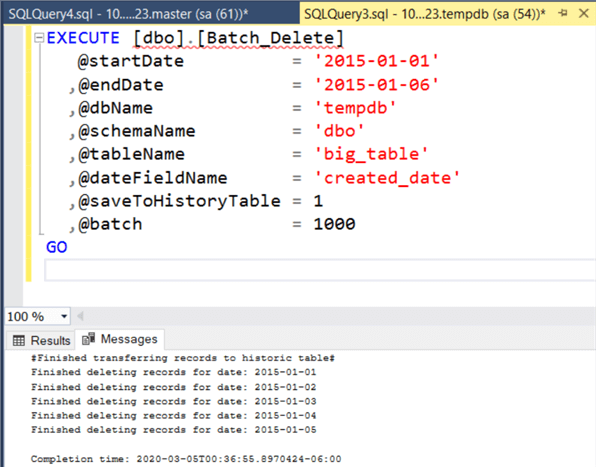

- #Running a stored procedure in sqlpro studio for mac
- #Running a stored procedure in sqlpro studio software
- #Running a stored procedure in sqlpro studio windows
It even supports some NoSQL systems like MongoDB and Redis. It is a native GUI for relational databases, you can easily use this developer tool to view your database, run queries and organize data.
#Running a stored procedure in sqlpro studio windows
It is a multi-purpose database client that runs on Windows and MacOS, it has huge support for different database systems.
#Running a stored procedure in sqlpro studio software
TablePlus is one of the best database software available for Mac. A GUI client makes the development process much easier and you can run your queries and test them using a GUI client. You have MySQL, MongoDB and SQLite, and many more, but you need a decent database client to use to connect to these database systems. There are loads of different database systems out there.
#Running a stored procedure in sqlpro studio for mac
Best Database Software For Mac (Free & Paid) We have reviewed all of them so you can check out their pros and cons and find which one suits you best.įirst, if you are new to databases, check out how long it takes to learn SQL. In this article, we will go through all the best available Mac database clients. This Mac database software has many features, some programs more than others, and there are lots to choose from. Especially database clients that are used to access either a local test database or an actual production database. There are numerous developer tools out there but one important one is database software. If you have more than one application pool the trick is to identify the one being used by your ASP.NET application.MacOS is an extremely popular platform for developers, and the system is used across the world as a developer's first choice to work. in section 'Process Model' notice value for 'Identity' (this value can be changed to a domain user account which can be assigned to SQL Server resources).in right hand pane click to select 'Advanced Settings.'.In middle pane, click to select any application pool.In left hand pane, expand server node and click to select 'Application Pools'.Open Internet Information Services (IIS) Manager (A.K.A., inetmgr.exe).Performing a test includes connecting to the SQL Server as the security context the application pool identity is based on, then simply try to execute the failing stored procedure in a query window (using this security context). Verify the Application Pool identity has sufficient privileges on the database. If so, then you are likely using an Application Pool. If you deployed an ASP.NET application to a development server you are likely using IIS. Unfortunately, I don't have time to rewrite the entire application to eliminate the stored procedures.ĭoes anyone have any ideas of what to look for? Thank you.Īssuming your database connection string is using trusted security. I just can't use the stored procedures to do the work from the website. I am able to run the stored procedures from Management Studio when logged on using the application's SQL account. I am able to SELECT, INSERT, UPDATE, and DELETE data directly from the webpages on the development server when stored procedures are not used. The user is a member of a Database role which is granted DELETE, EXECUTE, INSERT, REFERENCES, SELECT, UPDATE, and VIEW DEFINITION permissions on the WEBDATA schema: The EXECUTE permission was denied on the object 'USP_My_Procedure', database 'WEB_DB', schema 'WEBDATA' The problem: all stored procedures return the same error: I can run the website on the localhost with no errors and am trying to get it to work on our development web server. I have successfully rewritten all of the web pages to use the new syntax. The original developer made extensive use of Oracle packages for data manipulation and I have successfully converted everything to stored procedures and user-defined functions. The website is built in ASP.NET Framework 4 using Visual Studio 2015. I am converting a website from Oracle to SQL Server 2016.


 0 kommentar(er)
0 kommentar(er)
